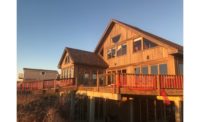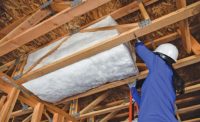Fiber cement consists of fibrous, non-flammable materials, such as wood pulp mixed with Portland cement, water and silica or fly ash. By virtue of its physical properties, fiber cement siding is less susceptible to common environmental threats (such as fire, heat or moisture) than traditional wood cladding.
Fire-Resistant
In encounters with fire, wood siding quickly becomes fuel and vinyl siding will melt. Fiber cement siding, on the other hand, will resist combustion. Organizations such as the ASTM, the National Fire Protection Association, and the Canada/Unlimited Liability Corporation (CAN/ULC) have developed an array of tests utilized by manufacturers and governments to measure ignition resistance, combustibility and flame spread in building/wall products. These tests allow manufacturers to prove that fiber cement may be safely used with wall assemblies that have been rated fire-resistant.
Fiber cement’s proven capacity for resisting fire is particularly relevant to those who live and work in California, Colorado, Idaho, Ohio, Montana, Nevada, Wyoming and other areas at high-risk for wildfires. In Chapter 7 of the state’s building code, California—which is a trendsetter when it comes to codes and construction—established standards and guidelines for materials and construction methods that help buildings increase fire resilience and the survivability of people and property located in areas designated as Fire Hazard Severity Zones or Wildland-Urban Interface Fire Areas. Fiber cement products have been tested and proved for use in WUI areas and can help protect buildings from ignition by embers that can fly as far as a mile away from a wildfire.
Last One Standing
Fiber cement’s resiliency was exemplified when a series of 250 wildfires burned thousands of buildings, homes and acres in California in October 2017. One homeowner, however, experienced a bit of luck. Although his main residence was destroyed, a standalone home office with fiber cement siding remained standing throughout the blaze.
This increased durability does not require any aesthetic sacrifices. Available as boards and architectural wall panels, fiber cement is highly versatile and can be processed and pressed to create products of varying sizes, lengths, thicknesses and textures. It can be molded to closely resemble natural products, such as wood and stone, or fashioned to foster a clean, ultra-modern look.












